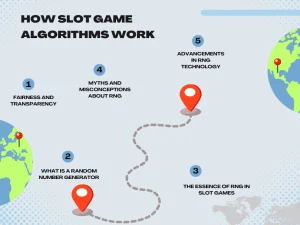Slot games aren’t just about spinning reels and chasing jackpots—they’re a mirror of culture, history, and regional tastes. From ancient mythology to modern pop culture, game developers weave narratives that resonate with players worldwide. But here’s the thing: what works in one market might flop in another. Let’s dive into how cultural themes shape slot games and why regional preferences matter.
Why Culture Matters in Slot Design
Think of slot games as tiny, interactive stories. Players are more likely to engage with themes that feel familiar or intriguingly exotic—but not too foreign. A Norse mythology slot might crush it in Scandinavia but underwhelm in Southeast Asia. Meanwhile, a Lunar New Year-themed game could dominate in China but gather dust in Brazil. It’s all about context.
Key Cultural Influences in Slot Games
Here’s a quick breakdown of dominant themes by region:
- Europe: Mythology (Greek, Norse, Celtic), history (medieval knights, Vikings), and fairy tales.
- Asia: Luck and prosperity (dragons, phoenixes, zodiacs), folklore (Journey to the West), and festivals (Lunar New Year).
- North America: Pop culture (movies, TV shows), adventure (wild west, pirates), and sports.
- Latin America: Vibrant festivals (Day of the Dead), nature (Amazon rainforest), and ancient civilizations (Aztecs, Mayans).
Regional Preferences: What Players Love (And What They Don’t)
You know how some foods just taste better at home? Slots work the same way. Here’s how regional quirks play out:
Europe: Tradition Meets Innovation
European players lean toward classic themes—think Merlin’s magic or Valkyries soaring across reels. But don’t mistake tradition for boredom. Scandinavian markets, for instance, adore high-volatility slots with dark, moody aesthetics. Meanwhile, Mediterranean players often prefer sunnier, luck-based motifs.
Asia: Symbolism Over Everything
In Asian markets, color and symbolism are king. Red and gold dominate—colors of luck and wealth. The number 8? Pure gold. Avoid the number 4 (it sounds like “death” in Mandarin). And if your slot doesn’t have a dragon or a fortune cat, well, good luck competing.
North America: Blockbusters and Nostalgia
Hollywood rules here. Slots tied to movies, rock bands, or TV shows thrive. Think Jurassic Park or Game of Thrones. But there’s also a soft spot for retro vibes—fruit machines, disco themes, and anything that screams “remember the 80s?”
Latin America: Celebration and Color
Bright, festive themes win. Day of the Dead slots? Huge. Carnival-inspired games with samba beats? Even better. And let’s not forget soccer—anything tied to fútbol is basically a guaranteed hit.
How Developers Adapt to Cultural Nuances
Game studios don’t just slap a theme on a slot and call it a day. Localization is key. Here’s what that looks like:
- Visual tweaks: Adjusting colors, symbols, and even character designs to align with local tastes.
- Sound design: Music and sound effects that feel familiar—whether it’s a koto in Japan or mariachi trumpets in Mexico.
- Game mechanics: Some regions prefer high-risk, high-reward slots; others favor slower, bonus-heavy gameplay.
For example, NetEnt’s Hall of Gods—a Norse mythology slot—was a hit in Europe but flopped in Asia. Meanwhile, Pragmatic Play’s Gates of Olympus, with its Greek theme, found fans globally by blending universal symbols (gods, gold) with adaptable features.
The Future: Blending Cultures and Breaking Boundaries
As markets globalize, we’re seeing more hybrid themes. A slot might mix Egyptian pyramids with anime-style art—appealing to both history buffs and manga lovers. Megaways mechanics, which originated in Australia, are now everywhere. And honestly? Players are more open than ever to cross-cultural experiments.
But one thing won’t change: the need to respect cultural depth. A shallow, stereotypical theme won’t cut it. Players can tell when a game gets them—and when it’s just pandering.
So, what’s next? Maybe a K-pop meets Aztec empire slot? Stranger things have happened.




